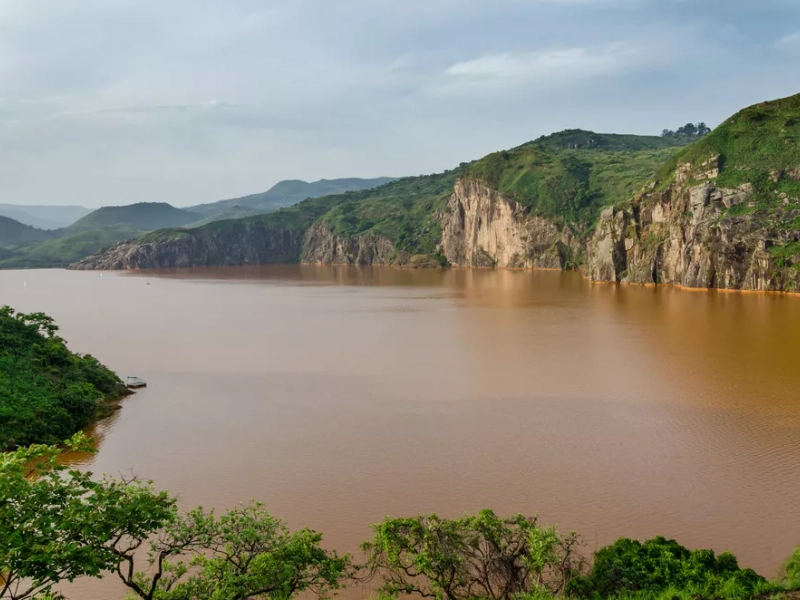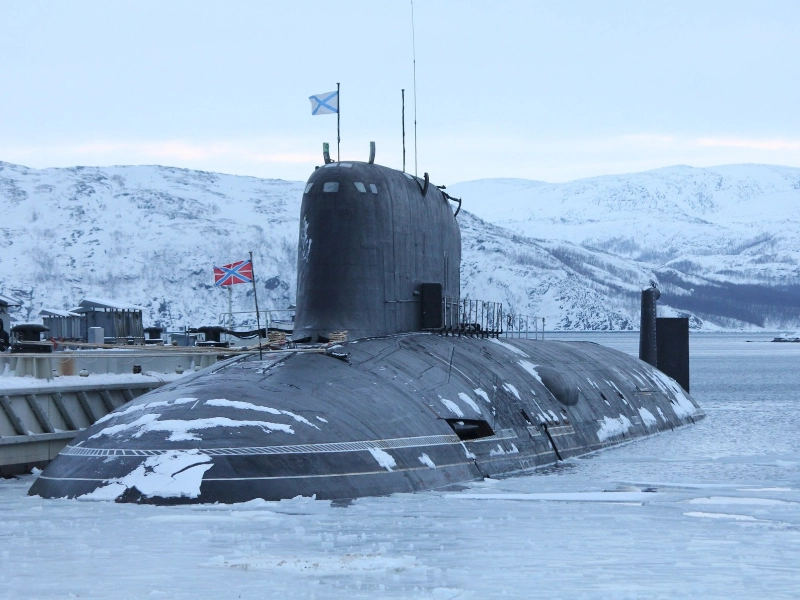13 Bizarre Lakes You Won't Believe Exist
Advertisement
4. Lake Nyos: Cameroon's Deadly Exploding Lake

Nestled among the undulating hills of northwest Cameroon is Lake Nyos, an apparently tranquil lake with a terrible secret. Often referred to as one of the only "exploding lakes" in the world, Lake Nyos attracted international notice in 1986 when it unleashed a horrific natural disaster across a 15-mile radius that claimed the lives of 1,746 people and about 3,500 animals. This sad catastrophe made clear the special and dangerous character of this amazing geological occurrence.
Part of the Cameroon Volcanic Line, Lake Nyos rests on an extinct volcano. The fact that this lake sits above a volcanic pocket constantly spewing carbon dioxide into its waters makes it very deadly. Regular mixing of lakes under normal conditions lets dissolved gases escape into the atmosphere. Still and stratified, Lake Nyos has layers of water that seldom combine. This lets great volumes of carbon dioxide build up in the lake's lower levels over time.
The 1986 disaster started when a major disturbance—probably from a landslip, minor earthquake, or volcanic activity—caused the lake to rapidly "turn over." This quick mixing of the lake's layers released an enormous cloud of carbon dioxide trapped in the bottom. This invisible, odourless gas, heavier than air, swirled down the nearby valleys, smothering all living things in its path and displacing oxygen. Considered a limnic eruption, the occurrence was the first major asphyxiation brought on by a natural calamity ever documented.
The Lake Nyos tragedy left terrible effects. Whole communities were destroyed; survivors woke up to see dead loved ones and animals without any obvious marks of violence. The lack of any obvious reason first caused uncertainty and anxiety among the local populace. The actual character of the disaster was not known until scientists came and started looking at it.
Extensive studies have been carried out in the years following the accident to grasp the processes behind limnic eruptions and stop next tragedies. One of the most important discoveries was that Lake Nyos had refilled with carbon dioxide to dangerously high levels in a rather short period, suggesting that another eruption was always under risk and maybe soon.
An inventive degassing mechanism was put in place in 2001 to help to reduce this danger. Pipes placed into the lake bring CO2-rich water to the surface, therefore enabling the gas to be released gradually and safely into the atmosphere. These pipes have produced fountains that define Lake Nyos and act as a continual reminder of the concealed threat under the surface and the continuous management efforts.
Our knowledge of geological risks has been much changed by the Lake Nyos catastrophe and later studies. It has prompted more observation of other possibly hazardous lakes, especially in volcanic areas. Given its size and population density, Lake Kivu, straddling the border between Rwanda and the Democratic Republic of Congo, has been found to be another lake with the possible for a limnic eruption, albeit on perhaps much more a scale.
Furthermore helping to improve disaster readiness and risk analysis are the incidents at Lake Nyos. The incident underlined the need of knowing and keeping an eye on apparently benign natural elements that might create unanticipated hazards. It has affected the way professionals in disaster management and geology handle risk evaluation in volcanic areas all around.
Lake Nyos is nevertheless of scientific interest and concern even with continuous degassing attempts. Scientists keep checking the gas levels of the lake and investigating its special qualities. Understanding the connection between geological processes and limnological systems finds natural laboratory in the lake. Research on the microscopic life in the CO2-rich lake waters could also help us to better grasp life in hostile conditions, both on Earth and maybe on other worlds.
The Lake Nyos catastrophe is a sobering reminder of the might of natural forces and the need of scientific knowledge in reducing natural risks. It emphasises the importance of ongoing investigation, observation, and worldwide cooperation in handling possible geological hazards. The lessons learnt from Lake Nyos become ever more important to global catastrophe preparedness plans as climate change may influence volcanic and seismic activity anywhere.
Advertisement
Recommended Reading:
Mind-Blowing Coincidences That Are Hard To Believe →
You are viewing page 4 of this article. Please continue to page 5
Stay Updated
Actionable growth insights, once a week. No fluff, no spam—unsubscribe anytime.
Advertisement
You May Like

20 Heartwarming Animal Photos Sure to Brighten Your Mood
09/28/2025

What Amazing Things Happen When You Eat Avocado Daily?
08/19/2025

8 Fascinating Animal Pregnancy Before and After Changes
10/07/2025

Mini Mischief Makers: Funny Moments Only Parents Get
10/15/2025

9 Tender Animal Pictures That Invite a Hug
10/30/2025

20 Adorable Animal Pics to Melt Your Heart and Lift Your Mood
08/14/2025

13 Craziest Laws You Won’t Believe Exist Worldwide
08/11/2025

A Man Thought He Found a Puppy in the Forest, Then the Vet Called the Police
10/17/2025

Meet 2024's 25 Most Handsome Men Worldwide
09/02/2025

9 Cutting-Edge Military Submarines Dominating the Seas
08/15/2025

9 Bunny Breeds That Are Too Cute for Words
08/08/2025

10 Iconic Actors Unrecognizable in Jaw-Dropping Makeup
09/20/2025

Two Bananas Daily: Unexpected Health Benefits & Hidden Risks
08/13/2025

Animals Clearly Running the Show in These Hilarious Photos
10/17/2025

7 Incredible Baking Soda Benefits For Hair, Skin & Body
09/22/2025

15 Foods to Avoid First Thing in the Morning
08/22/2025

What You Notice First Reveals Your True Personality
10/11/2025

22 Mind-Blowing Ways to Use Banana Peels
10/13/2025

Optical Illusions: Jaw-Dropping Images That Trick Your Mind
10/18/2025

Cats Being Hilariously Funny Without Even Trying
08/19/2025

The Enigmatic Maya Calendar: Ancient Secrets Foretelling the World's End
08/18/2025

The Most Dangerous Dog Breeds Ranked
08/19/2025

4 Sisters' 40-Year Photo Journey Will Amaze You with Stunning Changes
08/30/2025

Discover 15 Best Weight Loss Methods!
10/06/2025
Comments
ClayAurora · 10/02/2025
This could refine hiring rubrics.